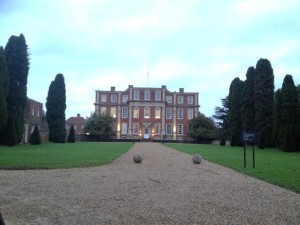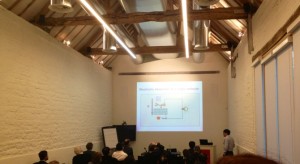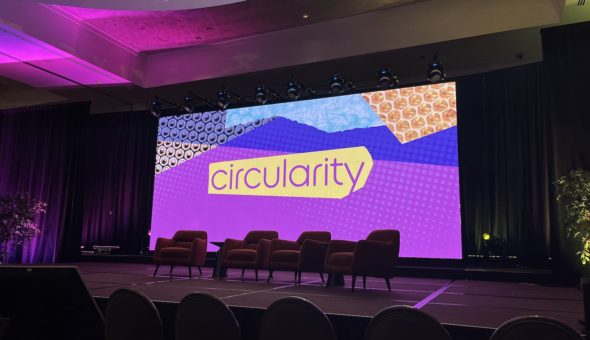On Monday 28 and Tuesday 29 January 2013, our student Ibbi Ahmet attended a Theo Murphy international scientific meeting held by The Royal Society, which "intended to be pivotal events of lasting significance."
This report comes from second-year DTC student Ibbi Ahmet.
 The UK-China workshop was excellent and showcased cutting edge knowledge, which brought together researchers from both China and the UK to present new and interesting concepts on a range of functional materials, addressing both the organic and inorganic fields.
The UK-China workshop was excellent and showcased cutting edge knowledge, which brought together researchers from both China and the UK to present new and interesting concepts on a range of functional materials, addressing both the organic and inorganic fields.
The conference was held at the beautiful location of Chicheley Hall close to Milton Keynes. There were a range of speakers and audience members that had eminent status in their field of research and impressive career successes.
I especially enjoyed the talk by Professor Clare Grey from the University of Cambridge, who presented some excellent concepts that used in-situ solid state NMR to characterise local structural changes in lithium ion batteries, specifically investigating the process of intercalating ions in silicon anodes and lithium air cathodes. The time-lapsed examination of in-situ rather than ex-situ charging of materials in the solid state presented interesting evidence of a multi-step intercalation processes, which can help develop and improve novel battery design as well as our understanding of cathode and anode materials.
 Professor Sir Richard Friend, from the University of Cambridge, presented an interesting mode towards high efficiency solar cells. He showed that using materials that had a triplet exciton energy less than one half of the singlet exciton energy will favour the fission of a singlet exciton to a pair of triple excitons (a “two for one offer!!”). This can result in an enhanced solar conversion efficiency beyond the theoretical single junction Shockley-Quessier limit (33.7% to c.a. 48%). He also demonstrated how this phenomenon occurs in a pentacene/leadselenide hybrid low band gap solar cell device.
Professor Sir Richard Friend, from the University of Cambridge, presented an interesting mode towards high efficiency solar cells. He showed that using materials that had a triplet exciton energy less than one half of the singlet exciton energy will favour the fission of a singlet exciton to a pair of triple excitons (a “two for one offer!!”). This can result in an enhanced solar conversion efficiency beyond the theoretical single junction Shockley-Quessier limit (33.7% to c.a. 48%). He also demonstrated how this phenomenon occurs in a pentacene/leadselenide hybrid low band gap solar cell device.
Professor Richard Catlow, from UCL, showed how computational techniques can be used to understand defect and electron processes in doped semiconducting materials. One fascinating topic of discussion was around p-type ZnO semiconducting materials: It was shown, by calculating the energetics of producing an oxygen vacancy or electron hole within a ZnO lattice, that an oxygen vacancy will be more favourable. This provides evidence for why it is difficult to produce good ZnO p-type semiconductors. He went on to explain why research will need to look towards producing ZnO materials that stabilise the electron hole process and destabilise the process of forming oxygen vacancies.
 Another talk, presented by Professor Yunqi Liu, was titled ‘Controllable synthesis of graphene by chemical vapour deposition method and studies on its electronic properties’. There were many techniques shown to be valuable for my research, such as growing high quality graphene onto a range of substrates including ruthenium crystals. It was then shown that graphene can undergo an interesting annealing process resulting in the intercalation of different materials between graphene sheets.
Another talk, presented by Professor Yunqi Liu, was titled ‘Controllable synthesis of graphene by chemical vapour deposition method and studies on its electronic properties’. There were many techniques shown to be valuable for my research, such as growing high quality graphene onto a range of substrates including ruthenium crystals. It was then shown that graphene can undergo an interesting annealing process resulting in the intercalation of different materials between graphene sheets.
Overall I felt that the conference was very educational and presented interesting experiments and research concepts that can be used to investigate a number of important functional materials in which the properties are not yet well known.
Respond


